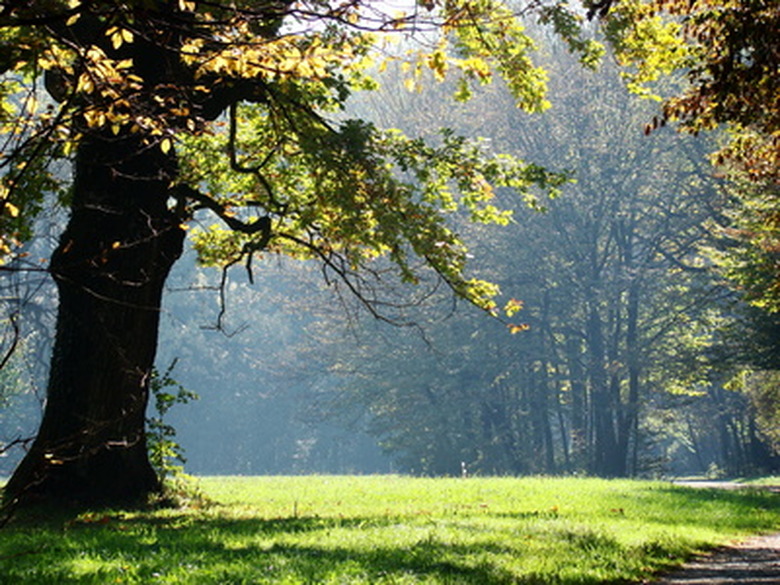Oak Trees & Caterpillars
Many varieties of caterpillars feed on the leaves of oak trees. To identify and treat the problem, educate yourself about the traits of different caterpillars and the symptoms and damage they cause, which takes the guesswork out of diagnosing your oak tree problem. Grow vigorous trees that can recover from harmful, cosmetic damage to defoliation by providing proper care.
Appropriate Care
When great damage occurs to a tree, a healthy tree is able to bounce back, whereas a stressed tree or a tree in decline may experience a progression in illness. For healthy oaks, grow trees in full to partial sun. Plant them in acidic, well-drained soil. Prune lightly year-round to remove any dead or injured plant parts, but save heavier pruning for winter or in the beginning of spring, according to the Clemson University Extension.
- Many varieties of caterpillars feed on the leaves of oak trees.
- To identify and treat the problem, educate yourself about the traits of different caterpillars and the symptoms and damage they cause, which takes the guesswork out of diagnosing your oak tree problem.
Types of Caterpillars
Orange-striped oakworm caterpillars (Anisota senatoria) grow to approximately 2 inches in length and have black bodies with orange stripes along the entirety of the caterpillar. Feeding occurs from July through the beginning of September by young groups or individual adults, according to the Michigan State University Extension. Oak skeletonizer caterpillars (Bucculatrix ainsliella) have a body measuring 1/4 inch in length; these pests are yellow-green and feed from June through August. Oak leaf rollers (Archips semi feranus) are green and grow up to 1 1/4 inches in length.
Life Cycle
Female moths lay eggs on the undersides of oak leaves, leading to the hatching of larvae. Larvae are generally white to yellow-green and feed in groups until maturity. In the final stage of the developmental life cycle, caterpillars form cocoons or dig into the soil for overwintering and emerge as moths. Moths vary in appearance and show up during the summer months, according to the Clemson University Extension.
- Orange-striped oakworm caterpillars (Anisota senatoria) grow to approximately 2 inches in length and have black bodies with orange stripes along the entirety of the caterpillar.
Symptoms and Damage
Orange-striped oakworms skeletonize leaves or eat all tissue except for the main leaf vein, according to the Michigan State University Extension. Skeletonization is the process by which caterpillars feed on the undersides of leaves without harming the upper smaller vein tissue, causing the leaf to look like a skeleton. The oak skeletonizer caterpillar causes skeletonization as well. Oak leaf rollers are a type of caterpillar that rolls leaves together for protection and as a feeding site; leaf damage includes skeletonization and shredding. Trees that experience heavy feeding often suffer from early defoliation; older trees may experience twig dieback if the loss of leaves causes excessive sunlight exposure, according to the Clemson University Extension.
Control
For control of caterpillars on oak trees, pluck them from the tree by hand when appropriate. On larger trees, naturally present enemies like birds and parasites often control the problem. Though the process may take a few years, caterpillar problems often disappear due to the natural cycle of predatory control. For a severe caterpillar infestation that you must take care of immediately, or on larger trees for which removal by hand is impossible, look for appropriate insecticides for application. For example, orange-striped oakworms can be removed by applying a bacterial insecticide called Bacillus thruingiensis that attacks larvae, according to the Clemson University Extension. Chemical options include the selection of an insecticide with one of the following active ingredients: spinosad, cyfluthrin, carbaryl or permethrin.
- Orange-striped oakworms skeletonize leaves or eat all tissue except for the main leaf vein, according to the Michigan State University Extension.
- Oak leaf rollers are a type of caterpillar that rolls leaves together for protection and as a feeding site; leaf damage includes skeletonization and shredding.
